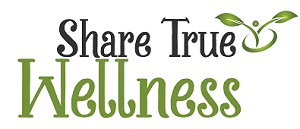
Check out some of the best beginner yoga tips for beginners and poses for building strength and flexibility you need to become a true yogi. In honor of the 40th anniversary of YJs, I have compiled a list of proven poses (asanas) that each yogi should practice regularly. Here is a list that focuses on tips for beginners, advanced and advanced alike.
Happily health is the best fitness app when you are looking for other workouts that compliment your yoga practice and vice versa. This is a yoga-inspired fitness app that directs the yoga flow like a regular workout, but contains yoga tips and elements.
Plank pose (Phalakasana) is perfect for strengthening the muscles of the arms and abdominal muscles that you need to take your yoga practice to the next level. This pose looks as if one stands with the arms at the side, but it is actually very powerful and lays the foundation for future yoga positions, which one will master. This posture has an enormous range of advantages, but one of the most important and valuable is the improvement of posture, which is a real cornerstone of yoga practice.
Chair Pose (Utkatasana) Share on Pinterest Chair Pose does not include a chair, but a kind of actual sitting. This pose looks like a standing posture, but is actually all yoga tips for standing positions.
Put this pose in challenging asanas and practice with your eyes closed and listen to the sound of your breath. Kursiasana (Chair Pose) – An incredibly powerful pose, this is a powerful pose to strengthen the muscles in the legs and arms.
If you have difficulty loosening or opening your shoulders in this pose, lift your hands off the floor onto a pair of block seats or a metal folding chair. Head and arms should point to knees and back should be flat. The upper body should be on the floor with the hands and the hips should be straight so that the curves of the natural spine bend inwards.
Facial dog (Adho Mukha Svanasana): This posture lengthens the spine, stretches the back and leg muscles and promotes digestion. It is a mild reversal posture that relieves stress, helps with headaches and calms the nervous system. To do this, push your hands back, lift your hips and take a deep breath.
Over time, as mobility increases, you will be able to enjoy deep stretches in your lower back and legs. It is important to incorporate forward bending into yoga practice to stretch the tendons, lower and upper back and sides.
Balance (Vriksasana ) is the key to yoga practice and tree pose is an asana that you can choose if you want to improve your skills. In her state of the art yoga instructor Annette Goubeaux describes Tree Pose as a simple basic pose that challenges the hips, balance, ankles and feet. There are many balancing postures in yoga, but this is the most common and most suitable for beginners.
Standing yoga poses are more stable than other types of postures because most of them are two feet from the floor. There is no need to jump into complex poses like reversals or try to be as pliable as the person next to you. In these poses you are on the ground, relaxing and reconnecting with who you are, whether you are a beginner or someone who has been practicing for decades.
It seems that yoga was invented by an Instagram influencer posing on a mountain top, but it has actually been around for thousands of years and offers a number of health benefits. Yoga is not about extreme flexibility or twisting muscles and spine into fancy shapes. It is about breathing, inner strength, meditation and creating freedom in the body through basic yoga poses.
Studies have shown that yoga can reduce anxiety, increase cognitive performance, stretch the body, relieve pain and relieve symptoms of depression. And it’s not just the crazy arm balancing and pretzel poses that are so popular on social media.
Whether you’re new to yoga or have a similar experience of hesitant to go to the gym and unroll your mat – learning a handful of poses that crop up in class is a great way to feel confident enough to try it out. Whether you want to learn the basic movements before taking a course, here are a few tips on how to start a homework exercise, learn a few poses, and improve flexibility – and here’s a sequence to get started.
Familiarize yourself with a few basic yoga tips and poses that share common alignment, muscular actions, and other postures is essential for you to feel comfortable going to yoga classes and practicing safely at home. As you practice yoga, you will build awareness of your body, but the most important thing for beginners is to stay in tune with your practice and remember that it is about making progress. As you progress while adopting more difficult poses, it is a good idea to keep things simple if you start as a beginner, as the yoga poses below are valuable and will keep you busy for a long time.
We thought it would be helpful to share some of the most accessible basic yoga poses in order to help you become one with your mat and gain the benefits that yoga practice provides. We contacted eleven yoga experts to get their recommendations on the essential yoga tips and postures that beginners should learn. We asked them for their tips and advice on how beginners should approach these poses and how they can be modified to make them more accessible to newcomers.
The plank pose is a yoga pose with which you should have some experience. If you never did it before, it is an attitude that yoga usually focuses on a little flexibility, as the yoga class is too busy focusing on their own yoga practice to take care of yours (including your friends).
To prepare you for your first yoga class, let us look at some typical fitness app to help you get started. If you haven’t been to a yoga class (and that’s OK), you may have a lot of questions about what types of yoga postures you can practice in class. These are yoga poses that you can do in class, but you can also practice them at home to learn a little more of them.




